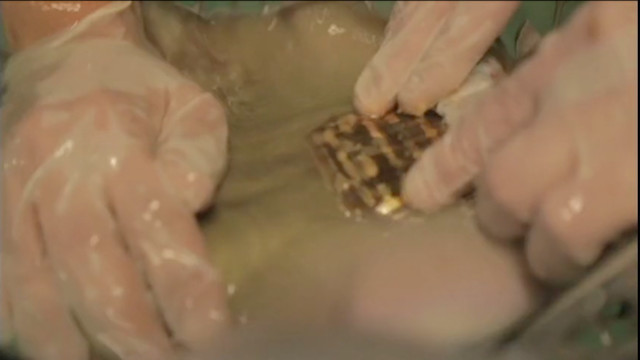
A team of KAUST researchers have created a new type of tagging system that is ideal for marine life. This thin smart patch is known as Marine Skin, and could be instrumental in improving the ways we study marine animals. Stretchable silicone is the key to this new system; it allows for twisting, stretching, and shearing — even when faced with the high pressures of deep water.
“The integrated flexible electronics can track an animal’s movement and diving behavior and the health of the surrounding marine environment in real time.”
The new Marine Skin is waterproof and ultra-lightweight, making it easy to adhere to the animal and ensuring it will stay in place. It is physically flexible and stretchable, and comes equipped with a standalone wireless multisensory platform. The platform tracks conductivity, temperature, and depth. Besides being non-invasive, the sensor is incredibly tough, and comes at a significantly lower cost. All data received by the sensor can be wirelessly transmitted to a smartphone with a special app designed just for this purpose.
The material of Marine Skin is truly impressive. It is composed of flexible and stretchable polymeric counterparts, allowing it to easily bend and adapt to the body of a sea creature. The material is hydrophobic, non-irritating, and non-toxic — all of which factor significantly into the health and welfare of the animal. The durable material does not decompose or degrade, even when exposed to the microorganisms found in sea water. The design of the sensor can be easily adjusted depending on the shape of the animal being studied.
To receive all the data being captured by the sensor, scientists developed a wireless marine system that relies on Bluetooth technology. The system is capable of reading capacitive (pressure) and resistive (temperature and salinity) sensors. A Programmable System-on-Chip is mounted on a tiny printed circuit board. Whenever the animal emerges from the water, data is wirelessly sent via the Bluetooth technology. This keeps the power usage low as well, extending the life of the sensor.
Marine Skin has already been successfully tested long-term on small animals like crabs, and scientists are ready to move onto bigger creatures. Further testing is necessary, but these sensors promise to change the way we observe and interact with ocean life.
